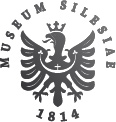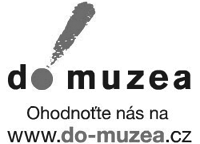ČASOPIS SZM SÉRIE B – VĚDY HISTORICKÉ
LXV/3/2016
OBSAH/CONTENTS
STUDIE/STUDIES
Vratislav Janák – Kateřina Papáková – Antonín Přichystal – Peter Kováčik – Aleš Knápek – Petr Rataj – Jan Boček – Andrea Hořínková: Broušená a štípaná kamenná industrie z neolitického sídliště Pustějov – „Dolní Role" v letech 2011–2012 / Polished and chipped stone industry from the neolithy settlement Pustějov – „Dolní role" in 2011–2012
(s. 201–222)
Abstract
During a landscape survey in Pustějov area – 'Dolní rokle', which took place in 2011, 3 pieces of polished
stone industry and 20 pieces of chipped stone industry were found. In mid August 2012 further excavation and
surface prospection were carried out. An additional surface prospection was carried out at the end of August
after ploughing. In 2012, 259 fragments of ceramic, 176 pcs of chipped stone industry, 2 pcs of polished stone
industry and 6 pcs of other stone industry were gained through these activities. Also collection of 81 pieces of
chipped stone industry found in the area by an archaeologist – amateur D. Fryč were included in the study.
According to the dating of the ceramic fragments we can distinguish two cultures in the area – the Linear Pottery
Culture (LPC) and Upper Silesian Lengyel group (ULG). During the research 90 pcs of chipped stone industry
were found – 85.6% belong to the silicites grom glacial sediments (SGS) and 10% to the silicites of Krakow-
Czestochowa Jurassic (SKCJ). Through the additional surface prospection 86 pcs of chipped stone industry
were gained. In this case there was similar representation of both the groups of material – GSS 37 pcs (44%),
SKCJ 36 pcs (42.9%). Similar results show also collections of D. Fryč (37 pcs, 45.5% of SGS as well as KCJS).
As we have to connect the industry fromSGS mostly with Lengyel settlement and industry from SKJC with LnC
settlement, it seems that the former should be found in the northwest part of the area and the later farther in
the southeast. Typological-technologic analysis of the chipped stone industry brought circumstantial evidence of
quite intensive local production from both the materials – and thus in both the settlements in the area, Linear
(SKJC) and Lengyel (SGS) – and also significant distinction between them both. Blade-flake character of SKJC
industry may indicate smaller starting forms of material than in case of the markedly blade character of chipped
stone industry from SGS. The analysis also showed similarity in the fine industry from both the materials. The
leading types of tools (scrapers and retouched blades) are identical for both the industries and comprise the
majority of the tools.
Keywords: polished and chipped stone industry, Pustějov, surface prospection
Hana Malíková (Kartousová) – Pavla Skalická: K datování hospodářské stavby z areálu dominikán-ského kláštera v Opavě / On Dating of an outbuilding in the premises of Dominican Monastery in Opava
(s. 223–236)
Abstract
The aim of the article is the summary of new information on dating of a wooden building found by dr. Vlasta
Šikulová in 1967 in the area of a stairway on the western side of the northern wing of the Dominican Monastery
in Opava. Already at the beginning the author of the survey interpreted the building as a part of the farm base of
the monastery and stated that the used wood shows signs of secondary use which could be confirmed by dendrochronology.
In 2014, after almost fifty years, the parts of the wooden building were subjected to a modern dendrochronological
dating due to cataloguing. The summary of the results of the analysis conclude the paper.
Keywords: wooden building, Dominican Monastery in Opava, dendrochronology, Vlasta Šikulová
Adam HUBÁČEK: Architektonická tvorba Josefa Seyfrieda / Architectonic work of Josef Seyfried
(s. 237–252)
Abstract
The architect Josef Seyfried gained special working experience in Opavian building company of Julius Lundwall
and in the building department of Teschen Chamber. He realised the churches in Kravaře (1894–1896), in
Liptina, in Sudice, the extension of the Church of St. Stanislaus in Bolatice (1911‒1912) and some others. The
known activities of Josef Seyfried as an architect end during the World War I. His work in late historicism positively
fits in the architectonic development of architecture in Racibórz region under which Hlučín region belonged
until 1920.
Keywords: Josef Seyfried, architecture, Hlučín region, Racibórz region, sacral architecture, late historicism,
neogothic, neo-baroque
Jan MATYÁŠ: Známý neznámý Franz Rosmaël. K 170. výročí narození a 100. výročí úmrtí / The Known Unknown Franz Rosmaël
(253–270)
Abstract
Until now the life of Franz Rosmaël has not been dealt with in scientific literature. Mostly only diploma theses
focusing on the history of Imperial-Royal School for Wood Processing in Valašské Meziřící included his profile.
Thus the aim of this study is detailed description of Rosmaël's life story and his career in education, in the field
of conservation and art. Under the concluded research we first succeeded in establishing his sphere of activity
before he started working at the Imperial-Royal School in Valašské Meziříčí and after he left. The study also
mentions his position at the School and activities he occupied himself besides the school. In particular he
worked as a conservator for the Imperial-Royal Central Commission for the Research and Conservation of Historic
Buildings. Therefore, on the basis of established information it was possible to reconstruct the life story of
an artist, pedagogue and preservationist Franz Rosmaël in more detail and deepen the knowledge of such
an outstanding personality reaching beyond the borders of Eastern Moravia.
Keywords: Franz Rosmaël, Imperial-Royal School for Wood Processing in Valašské Meziřící, Imperial-Royal
Central Commission for the Research and Conservation of Historic Buildings, Moravia, Silesia
Tomáš KRÖMER: Arnošt Slipek – muzejník a představitel slezského odboje / Arnošt Slipek – museum employee and representative of silesian resistence
(s. 271–282)
Abstract
Arnošt Slipek was the only employee of the Opavian branch of the Czechoslovak Agricultural Museum. The preserved
documents clarify his museum activities including documentation of Silesian rustic architecture, publication
activities and Slipek's life story during World War II when he was shortly part of resistance group Defence
of the Opavian Region.
Keywords: Czech Silesia, anti-Nazi resistance, history of museums, rustic architecture, Czechoslovak Agricultural
Museum, Arnošt Slipek (1909–1982)
RECENZE/REVIEWS
(s. 283–291)
Mirosław Węcki, Fritz Bracht (1899–1945): Nazistowski zarządca Górnego Śląska w latach II wojny światowej (Branislav Dorko), Libor Martinek, Identita v literatuře Těšínska (Jiří Šíl), Jan Rychlík – Magdaléna Rychlíková, Podkarpatská Rus v dějinách Československa 1918‒1946 (Martin Liška), Ilona Matejko-Peterka – Ondřej Haničák – Martin Janák, Spolkový život ve Slezsku. Spolky ve světle dochovaných památek (Ivan Puš), František Kolář – Dalibor Prix – Michal Zezula (eds.), Krnov – historie, archeologie (Klára Mezihoráková), Romana Rosová, Razumovští a jejich stopy na Opavsku (Jaromíra Knapíková).
KRONIKA/CHRONICLE
(s. 292–300)
Konference Textil v muzeu (Martina Polomíková), Mezinárodní den archivů v archivech Zemského archivu v Opavě (Irena Hajzlerová), Konference konzervátorů-restaurátorů Brno 2016 (Jana Pospíšilová), XVI. svatováclavské setkání v Jeseníku (Michaela Kollerová), Výstava Spolkový život ve Slezsku (Ondřej Haničák), Městský archivář Wolfgang Wann (Zdeněk Kravar).
Poslední aktualizace článku: 19.06.2020
Vytisknout celý článek







